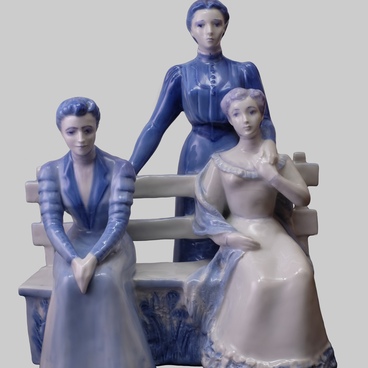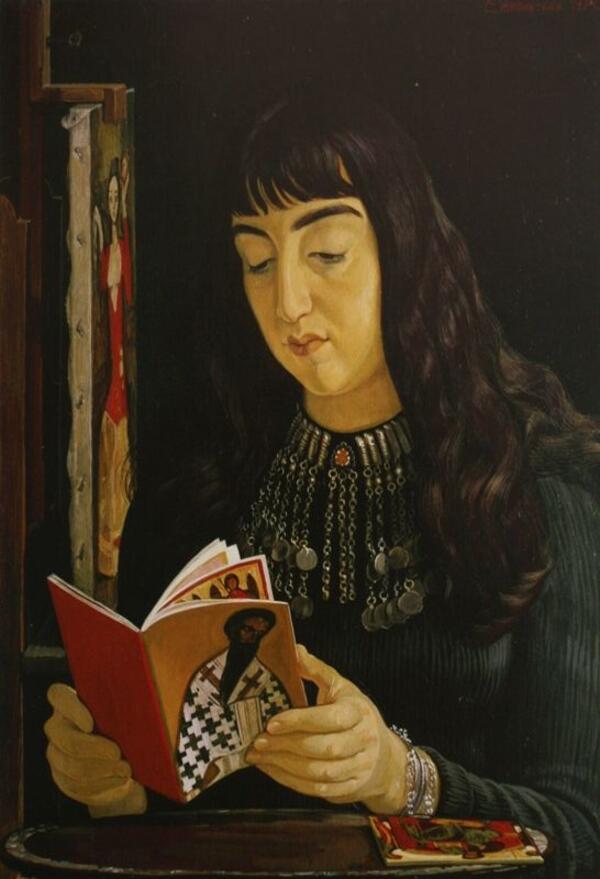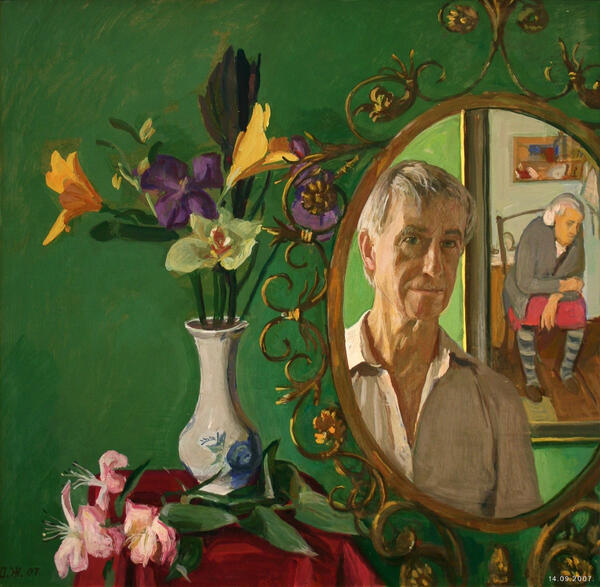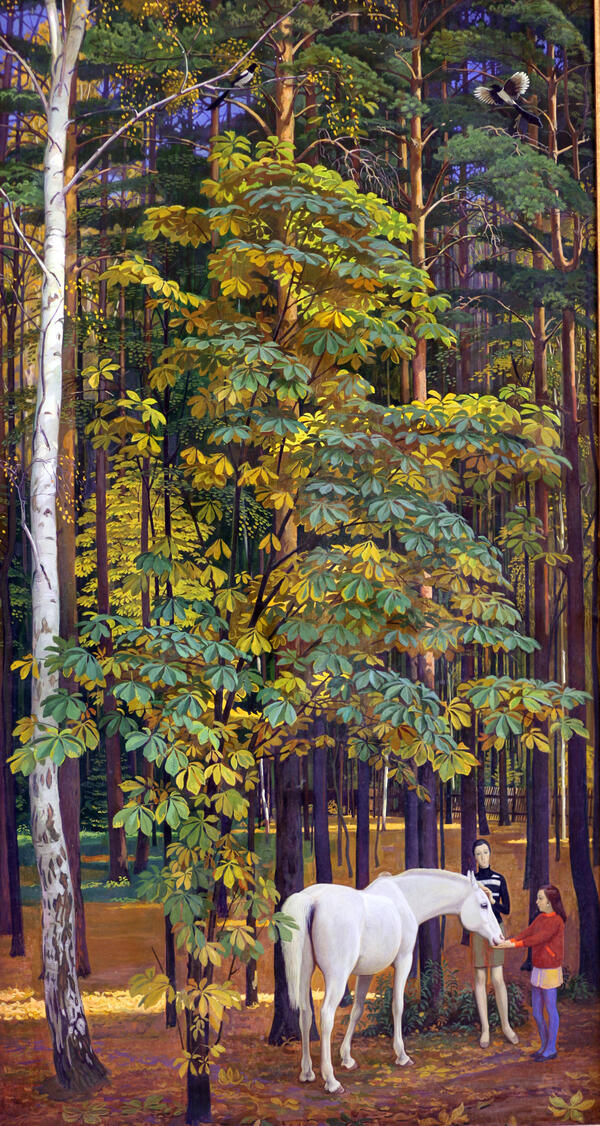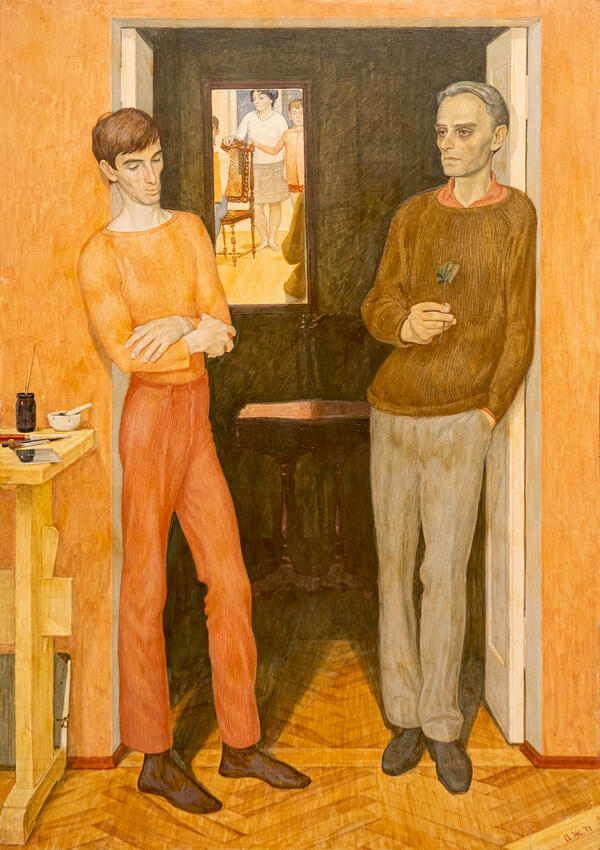The panel ‘Spring of the Art Theater’ was presented to the museum by the author himself, Dmitry Dmitrievich Zhilinsky. The work was created in 1988 and is dedicated to the 90th anniversary of the Moscow Art Academic Theater. The reproduction is quite impressive in size: 160 × 350 centimeters and is in the center of the exhibition. But the main significance of the item t is given by the event, captured in the picture: a breakfast for the artists and directors of the Moscow Art Theater, organized on April 24, 1900 by Fanny Karlovna Tatarinova, one of Chekhov’s admirers.
In April 1900, the Moscow Art Theater brought the “The Seagull” and “Uncle Vanya” to the Crimea to show them to the author. Chekhov was ill at that time and could not come to Moscow, where his plays were staged with great success at the Moscow Art Theater. And then the directors of the theater, Konstantin Sergeevich Stanislavsky and Vladimir Ivanovich Nemirovich-Danchenko, decided to take a very serious step. They gathered the entire troupe and all the technical staff and went to the Crimea to Chekhov. The spring season of bad roads has become a serious trial for artists and their families. But the theater tour in Crimea turned into a real “spring holiday” as Olga Leonardovna Knipper-Chekhova later recalled about it. In honor of this event, at the end of the tour, a wonderful “breakfast extravaganza” was organized, as the participants themselves later called it. Actors, painters, writers, friends of the theater gathered on the huge flat roof of the Tatarinovs' villa - all the direct participants and creators of this event.
Forty-three characters are depicted in the panel. Among them are prominent figures of culture and art: Ivan Alekseevich Bunin, Aleksandr Ivanovich Kuprin, Aleksey Maksimovich Gorky, Nikolai Dmitrievich Teleshov, Dmitry Narkisovich Mamin-Sibiryak, Leopold Antonovich Sulerzhitskiy, Konstantin Alekseevich Korovin and many others. The central figure of the composition is Anton Pavlovich Chekhov.
Artist Dmitry Dmitrievich Zhilinsky (1927-2015) graduated the Moscow Academic Art Institute named after V.I.Surikov. All his life he painted portraits of artistic people with great inspiration. Being in creative search all his life, he is very attentive to the details. His approach to painting is very individual, and his portraits reflect not only external similarities, but very accurately convey the characters’ state of mind. The artist spent a lot of time in Yalta preparing for the creation of ‘Spring of the Art Theater’.
In April 1900, the Moscow Art Theater brought the “The Seagull” and “Uncle Vanya” to the Crimea to show them to the author. Chekhov was ill at that time and could not come to Moscow, where his plays were staged with great success at the Moscow Art Theater. And then the directors of the theater, Konstantin Sergeevich Stanislavsky and Vladimir Ivanovich Nemirovich-Danchenko, decided to take a very serious step. They gathered the entire troupe and all the technical staff and went to the Crimea to Chekhov. The spring season of bad roads has become a serious trial for artists and their families. But the theater tour in Crimea turned into a real “spring holiday” as Olga Leonardovna Knipper-Chekhova later recalled about it. In honor of this event, at the end of the tour, a wonderful “breakfast extravaganza” was organized, as the participants themselves later called it. Actors, painters, writers, friends of the theater gathered on the huge flat roof of the Tatarinovs' villa - all the direct participants and creators of this event.
Forty-three characters are depicted in the panel. Among them are prominent figures of culture and art: Ivan Alekseevich Bunin, Aleksandr Ivanovich Kuprin, Aleksey Maksimovich Gorky, Nikolai Dmitrievich Teleshov, Dmitry Narkisovich Mamin-Sibiryak, Leopold Antonovich Sulerzhitskiy, Konstantin Alekseevich Korovin and many others. The central figure of the composition is Anton Pavlovich Chekhov.
Artist Dmitry Dmitrievich Zhilinsky (1927-2015) graduated the Moscow Academic Art Institute named after V.I.Surikov. All his life he painted portraits of artistic people with great inspiration. Being in creative search all his life, he is very attentive to the details. His approach to painting is very individual, and his portraits reflect not only external similarities, but very accurately convey the characters’ state of mind. The artist spent a lot of time in Yalta preparing for the creation of ‘Spring of the Art Theater’.

